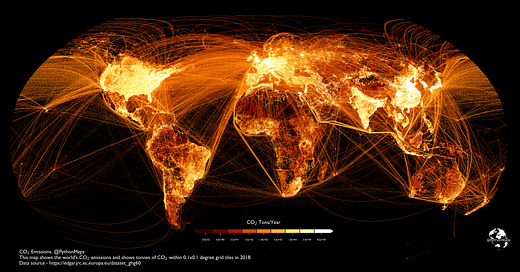The aviation industry is probably the most difficult sector to decarbonise.
Apart from the scorching colour representing regions of high emission intensity, the most notable thing about the map above is the web of flight paths circling the globe with greenhouse gas emissions.
The prevailing narrative from many commentators is that by replacing the existing global airline fleet with a combination of hydrogen and battery powered planes, we will dramatically cut emissions from air travel.
No matter the energy density, the end of flygskam is nigh.
The reality is likely to be much more mundane. Instead of re-engineering airplanes, the ground support, and the rest of the global airline infrastructure, synthetic jet fuels that can be blended with jet fuel and used to power conventional aircraft are expected to make the biggest dent in the industry’s carbon emissions.
Before we get to how they can play a role, and the interaction with the carbon market, lets first focus on the background and specifically where the airline industry has traditionally focused it’s cost cutting zeal.




